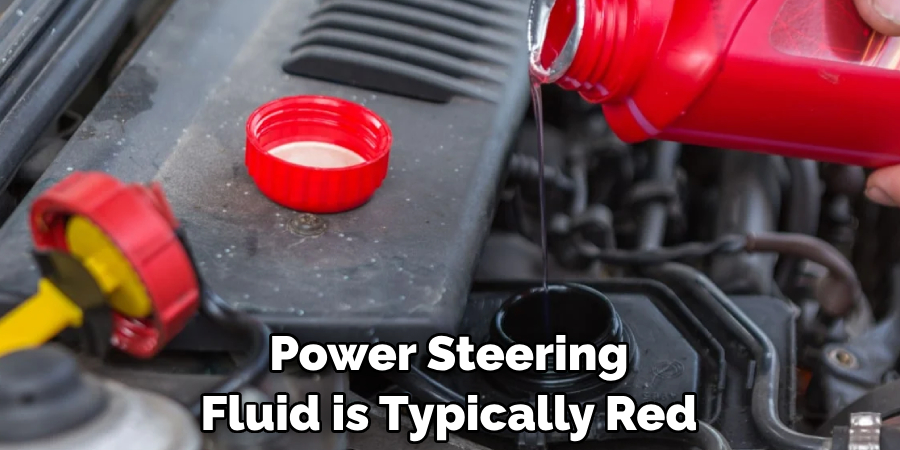Recognizing the early signs of a failing power steering system is crucial for maintaining control and safety while driving. A smooth and responsive power steering system is integral to effortless maneuvering, and when it begins to fail, the consequences can range from inconvenient to hazardous. In this article, we will explore how to tell if power steering is going out.

From a gradual increase in steering effort to audible whining noises and fluid leaks, understanding how to tell if your power steering is going out empowers vehicle owners to address issues proactively. By paying attention to these symptoms, you can take timely action to prevent further damage, ensuring that your power steering system remains reliable and your driving experience remains smooth and controlled.
Early Detection of Signs Indicating Potential Power Steering Issues
Early identification of power steering problems can save you from unexpected breakdowns and costly repairs. Here are some warning signs to watch out for. One common symptom is difficulty in steering, especially when the vehicle is moving slowly. This might indicate that the power steering fluid level is low or there is a problem with the power steering pump.
Another sign could be the steering wheel feeling stiff or heavy, making it harder to turn. Excessive noise when you turn the steering wheel, such as a whining or squealing sound, is another indication of potential power steering issues. Lastly, if you notice that your vehicle is veering to one side when you’re trying to drive straight, this could also suggest a problem with your power steering.
Understanding the Power Steering System
The power steering system is a critical component of your vehicle that enhances maneuverability and control. Comprised of several parts including the power steering pump, the steering gear or rack, and the lines that transport the power steering fluid, this system works in unison to reduce the physical effort needed to change the vehicle’s direction. When you turn the steering wheel, it’s the power steering system that enables the wheels to move smoothly and responsively.
The power steering pump generates the pressure required for steering, utilizing the power steering fluid as the medium for this pressure. When all these components are functioning correctly, steering requires minimal effort. However, when the power steering system begins to fail, these tasks become increasingly difficult, causing the aforementioned symptoms and potentially compromising vehicle control and safety.
Common Symptoms of Power Steering Problems
Power steering issues often manifest themselves through a series of symptoms. Here are some of the most common ones to look out for:
- Difficulty in Turning the Wheel: This is one of the most common symptoms of power steering problems. If you find it hard to turn the steering wheel or if it feels stiff, it could be a sign that your power steering is failing.
- Noise When Turning the Wheel: If you hear squealing, groaning, or whining noises when you turn the steering wheel, there could be an issue with the power steering system. These noises can be due to worn-out components or low power steering fluid.
- Vibrations in the Steering Wheel: If you feel vibrations in the steering wheel while stationary or when moving at low speeds, this could indicate a problem with the power steering pump.
- Steering Wheel Slips When You’re Trying to Turn or Hold It in a Turned Position: This could be a sign that the power steering system isn’t holding the necessary pressure to keep the wheels aligned.
- Fluid Leaks: Power steering fluid leaks are a common cause of power steering failure. If you notice a puddle of reddish or clear fluid underneath your car, it could be a sign of a power steering fluid leak.

By recognizing these symptoms early, you can take preventive measures to address the issues before they escalate, maintaining your vehicle’s safety and performance.
10 Methods How to Tell if Power Steering Is Going Out
1. Difficulty Steering
One of the most obvious signs that your power steering is going out is difficulty steering your vehicle. If you find it increasingly difficult to turn the steering wheel, especially at low speeds or when making sharp turns, it could be a sign that your power steering system is failing.
2. Whining Noise
A whining noise coming from under the hood of your car can also be an indication that your power steering is going out. This noise is often caused by air bubbles in the power steering fluid, which can occur when there is a leak in the system.
3. Leaking Fluid
Speaking of leaks, another way to tell if your power steering is going out is by checking for any leaking fluid. Power steering fluid is typically red or pink in color and has a distinct smell. If you notice any puddles of this fluid under your car, it’s time to get your power steering system checked.

4. Vibrating Steering Wheel
A vibrating or shaking steering wheel can also be a sign of power steering problems. This could be caused by a worn-out belt or pulley in the power steering system, which may need to be replaced.
5. Steering Wheel Not Returning to Center
If you notice that your steering wheel does not return to center after making a turn, it could indicate a problem with your power steering system. This issue may make it difficult to keep your car on a straight path and can be dangerous while driving.
6. Stiff Steering Wheel
In addition to difficulty turning the wheel, you may also experience stiff or heavy steering if your power steering is failing. This can make it challenging to control and maneuver your vehicle.

7. Dashboard Warning Light
Many modern cars have sensors that will trigger a warning light on the dashboard if there are issues with the power steering system. If this light comes on, it’s important to have your car inspected by a mechanic as soon as possible.
8. Burning Smell
A burning smell coming from your car could be a sign of many different issues, including a failing power steering system. This smell may be caused by overheating or burning power steering fluid, which can occur if there is a leak or other problem with the system.
9. Steering Wheel Slipping
If you feel like your steering wheel is slipping or not responding as it should, it could be due to a loss of power steering assistance. This can make it difficult to control your vehicle and should be addressed immediately.
10. Steering Wheel Fluid Level
Finally, one of the easiest ways to tell if your power steering is going out is by checking the fluid level in the reservoir. If the level is low, it could indicate a leak or other issue with the system that needs to be addressed.
Listening for Unusual Noises
Uncommon noises can be indicative of power steering issues. The power steering system is designed to operate silently under normal conditions. Therefore, any unusual sounds such as whining, groaning, or squealing when you turn the wheel should raise suspicion.
These sounds can be a result of low power steering fluid levels, which causes the pump to run dry and create noise, or due to a worn-out belt that is slipping on the pulleys. If you notice any abnormal noises, it’s advisable to consult a professional mechanic immediately to diagnose and resolve the issue. Remember, early detection of power steering problems can prevent more severe and costly repairs in the future.

Checking for Fluid Leaks
Identifying fluid leaks is a crucial step in determining if your power steering is going out. Power steering fluid is typically red or clear in color, making it distinguishable from other vehicle fluids. Examine the ground under your vehicle after it has been stationary for some time. If you find a puddle of red or clear fluid, it could be indicative of a power steering fluid leak.
You should also check beneath the hood. Look around the power steering pump and the fluid reservoir for any signs of dampness or staining, which could be caused by leaking fluid. Pay particular attention to the hoses and connections, as these are common areas for leaks to occur.
Conclusion
In conclusion, maintaining a healthy and functional power steering system is crucial for the safety and longevity of your vehicle. By understanding the warning signs of a failing power steering system, you can prevent potential accidents on the road and save yourself from expensive repairs.
From unusual noises to difficulty turning the wheel, these are all red flags that should not be ignored. So if you notice any of these signs, don’t wait for them to escalate into bigger problems.
Instead, take action immediately and have your power steering system checked by a professional mechanic. Remember, it’s better to be safe than sorry! And with these tips on how to tell if your power steering is going out, you now have the knowledge and tools to keep your car running smoothly and safely. So, there you have it – a quick and easy guide on how to tell if power steering is going out.

